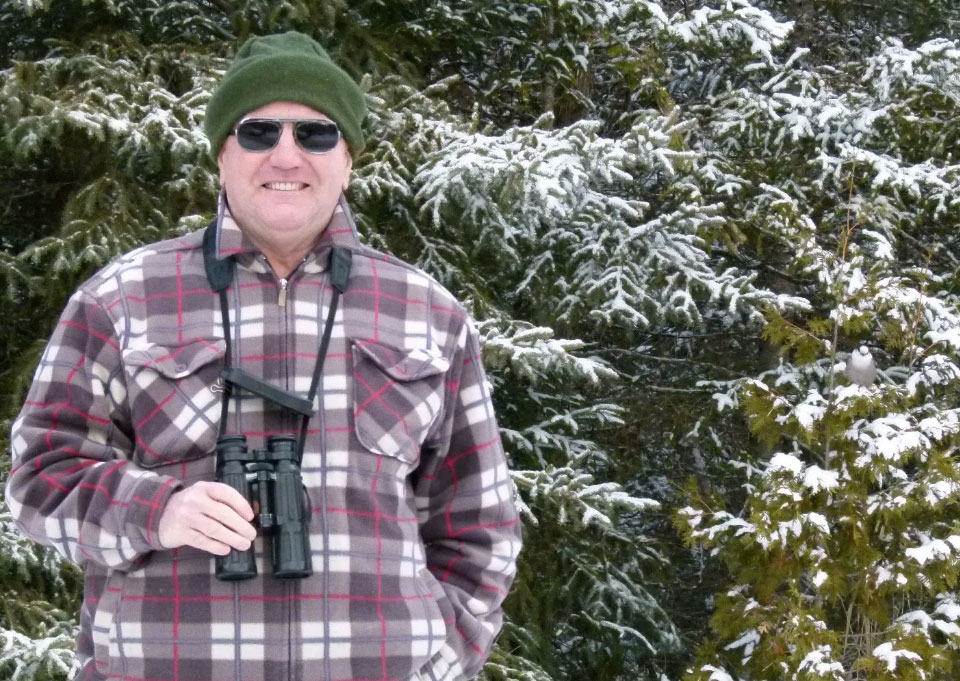About FiRN
The concept of the Finch Research Network (FiRN) really all began with Ian Newton and Ron Pittaway decades ago, and the below excerpts from The Cornell Lab’s Living Bird Magazine captures how all this began, so in this section of “Learn more about FiRN”, I give an ode to the men that made this all possible – without them this project wouldn’t already have the supporters it does. Here’s the link to the whole Living Bird article about Ron Pittaway: LINK

Excerpts about Ian Newton and Ron Pittaway:
In 1970, when he was 23 years old, Pittaway went north to the Canadian Arctic to work on a Snow Goose research program. The two morphs of the species—white and blue—appeared to be interbreeding, and government biologists wanted to know the implications for the population. Pittaway was one of many temporary bird surveyors hired for the study, which involved living at the edge of the goose breeding colony and monitoring the mating patterns, measuring eggs, and marking the young after they’d hatched.
The group was soon joined by a British scientist, Ian Newton, whose real interest was finches. “We were trying to figure out the morphs of the Snow Goose…but Ian was always asking me, ‘When you see a flock of Pine Grosbeaks, how many are there?’” recalled Pittaway. Two years later, Newton published his book, Finches. “I got it immediately. It’s really detailed on irruptions and food types,” Pittaway said. “It’s a classic, and even though it was published in 1972, it’s totally relevant today.” While Pittaway lived in Algonquin Park, he noticed that winter finches were not in abundance at the park’s many bird feeders every winter.” “It can be a long, cabin-fever type of winter if you don’t have the colored finches,” he said.
It was at Algonquin that Pittaway first began making a connection between the summer cone crops of cedars, spruces, and pines and the abundance—or scarcity—of siskins, crossbills, and grosbeaks in the winter. If there were no cones on the trees, it was a quiet winter at the feeders. Gradually he started to make predictions about the winter finches based on what he saw during the summer on coniferous trees, and shared his observations in casual conversations among friends. During this time, he was invited to give a talk on Algonquin Park’s wildlife to researchers at the nearby Leslie M. Frost Natural Resources Centre, part of the Ontario Ministry of Natural Resources. After the talk, a professor from the University of Waterloo approached Pittaway and asked him where he had earned his master’s degree. “I said, ‘Master’s? I only have a technical diploma from Algonquin College!’” Pittaway recalled. “Before I left that day, they said, if you ever wanted to go to university and complete a degree, we’d give you credit for the technical work you’ve done.”
Pittaway enrolled in the University of Waterloo in 1977 and graduated two years later. In 1981, Pittaway left Algonquin to work at the Frost Centre full time. He stayed for 23 years, teaching Ontario high school, college, and university students about conservation science. The experience also introduced him to more naturalists and other bird experts who would later become part of his finch network.
We just want to continue to build upon what Ian Newton and Ron Pittaway started 50 years ago!
Matt Young, 2020
Please send any donations payable by check to:
The Finch Research Network
PO Box 5431
Cortland, NY 13045
You can also email Matt Young at info@finchnetwork.org or call at 607-345-7713 to inquire more.
